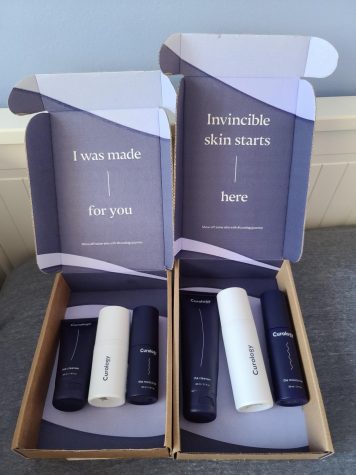Wilton Cake Decorating Course: Making Sweets in a Modern Era

Cakes, cupcakes and colorful sweet treats are something we see all around us nowadays. However, these scrumptious delights have ancestors that date back to ancient times.
In fact, ancient Egyptians were the first people to show any sign of advanced baking skills. Unlike the icing-covered cakes of today, these ancient cakes were more bread-like and sweetened with honey due to the unavailability of sugar. The icing-covered round cakes date back mid-17th century Europe. Technological advancements and sugar availability made it possible for these cakes to be made.
Although these round cakes are something we still see today, the most similar ancestor of today’s cakes (made of refined flour and baking powder instead of yeast) was first made in the middle of the 19th century. Later on in the 20th century, buttercream frostings started to replace boiled frostings. More recently, rolled fondant made its way from Australia to America, where it has become a major staple of the cake-decorating community.
Being an avid baker, I want to be a part of the next movement of baking traditions, so I decided to start learning more about current decorating. As I continued to immerse myself in the world of cake decorating, I learned about Wilton baking products and the company’s cake decorating courses, and was very satisfied with what it had to offer.
Michaels Craft stores offer Wilton classes and products, which makes it easy to get everything done in one place. I decided to take both Course 1 and Course 2 simultaneously. Usually, people take each class in order, but being an avid baker, I felt that I would be able to take both at the same time.
Course 1 familiarizes students with decorating tools and techniques, while Course 2 builds on those skills and introduces students to more advanced concepts. Upon starting the first course, I immediately thought, “This is going to be way too easy for me”— as I already knew about most baking tools and decorating styles. However, I did learn some valuable tips and ways to improve my baking/decorating experience.
On the first day of Course 1, we were introduced to decorating tips, such as the star tip, round tip, petal tip, drop flower tip, leaf tip and specialty tips. I remember thinking to myself, “I already know how to do this. What am I actually going to learn?” However, I immediately took back my words as I learned how to resolve a problem I had been struggling with for the longest time: icing consistency.
The kind instructor, Linda Bitto, explained the uses of different icing consistencies and how to achieve them. “You need to have a stiffer icing to make roses, and that could be a challenge,” Bitto said. Turns out, I am not alone when it comes to struggling with icing consistency. Even after I learned about how to fix the problem, it was still difficult for me to achieve the perfect consistency.
Sometimes I felt like saying, “Okay, I’m done with this consistency nonsense — this is just never going to work out,” but I certainly could not give up. Other people in the class experienced the same problem as well.
I remember hearing during the classes a lot of comments such as “Why do my flowers look like this?” This aspect of decorating is just a little finicky. Even the instructor admitted that “it is a challenge to get the right consistency, especially with royal frosting,” something I was introduced to in Course 2.
In addition to this valuable lesson, I also learned about the importance of “couplers”— little plastic tubes with little screw-on heads that go in a decorating bag. These little devices allow you to interchange decorating tips without having to change a bag. I had never used these and was always forced to start a new bag when I changed tips. Now, looking back at my old ways, I tell myself, “How did I survive without couplers?”
The next class required the students to bring a cake to decorate. We learned about bag positioning and the importance of angling. In addition, we also learned about pressure control, which is how much pressure you apply to the bag. The size and uniformity of the designs are directly affected by the amount of pressure applied to the bag. Angling and pressure control came into play as we learned about the curving line, tight zigzag and some dimensional decorating.
Executing these designs was very easy for me, as I had already experimented with them times before. However, sometimes I overfilled my bag, and it would be extremely difficult to make precise shapes. Bitto would always remind me, “Savanna, it would help you a lot if you don’t fill up your bag as much.” It took me a few times to get out the bad habit of overfilling.
The third class of Course 1 was by far my favorite because it dealt with a lot of flowers, which are very pretty and useful. I already knew some of the techniques, such as the star flowers, shells, and rosettes. A new concept for me was the pompom and the shaggy mum.
Those flowers were excellent additions to my knowledge of decorating. Class four required us to bring a cake once again. We could decorate our cake any way we wanted using the techniques we learned, including the ribbon rose, which we learned how to make that day.
While I was learning the basics in Course 1, I was being introduced to more advanced concepts in Course 2. The class size was much smaller for Course 2, because fewer people continue learning the advanced concepts; it was just me and another woman. On the first day, we learned about basic principles of floral cake design, and then delved into the world of gum paste and fondant.
I had never before used gum paste or fondant, so it was quite a challenge to work with either one. Even when my button flowers and pasnies did not turn out so nice, Bitto kindly told me, “All you need is practice.” This was the only time we ever used gum paste and fondant, so I was sort of relieved that I would not have to get my hands that dirty again.
The second class consisted of some review, such as learning how to use a flower nail, something we learned about in Course 1. This class was also one of my favorites because it dealt with a different array of flowers, such as apple blossoms, primroses, and rosebuds. It was my first time making these types of flowers, but with a little practice, it became relatively easy.
Another new thing I learned was how to make royal icing, as I had never heard of it until this class. Basically, it is icing that hardens and becomes candy-hard. It was quite difficult achieving the correct consistency for this specific type of icing. Even Bitto admitted that it is a “finicky” process. Even though this icing brings with it a love-hate relationship, it is a very useful frosting, because according to Bitto, it can be dried and stored for years.
On the third lesson, we learned how to make even more flowers with royal icing. Once again, these were flowers I had never made: daffodils, violets and lilies. Just like the class four of Course 1, this course’s class four required us to bring a cake to decorate with flowers we had made with the royal icing. I used some of my royal icing flowers as well as some buttercream ones.
Overall, I learned quite a wealth of information from both of these courses, even though I already knew a lot about decorating. Sometimes there are things you can’t teach yourself, and that is when a class is needed. Now, I am an even more educated decorator/baker, and am inspired to continue with Courses 3 and 4, partly because my instructor spoke so highly of her experience with the classes.
Just like me, she first became interested in baking as a teenager. Baking has been more of a hobby for her; however “opportunistic” events allowed her to expand on her baking skills. She worked in a market as a cake decorator, and gained other skills on top of the ones she already had from Wilton classes.
“Working at the market was a great experience, altogether different from doing things at home, because it was more production,” said Bitto. Working for Wilton was also “opportunistic” for Bitto but she enjoys it very much. “Other people share my passion, so I get to share that with them,” said Bitto. “I enjoy it thoroughly.” She even had some wise words for people like me who enjoy baking and decorating — “Pursue it.”







